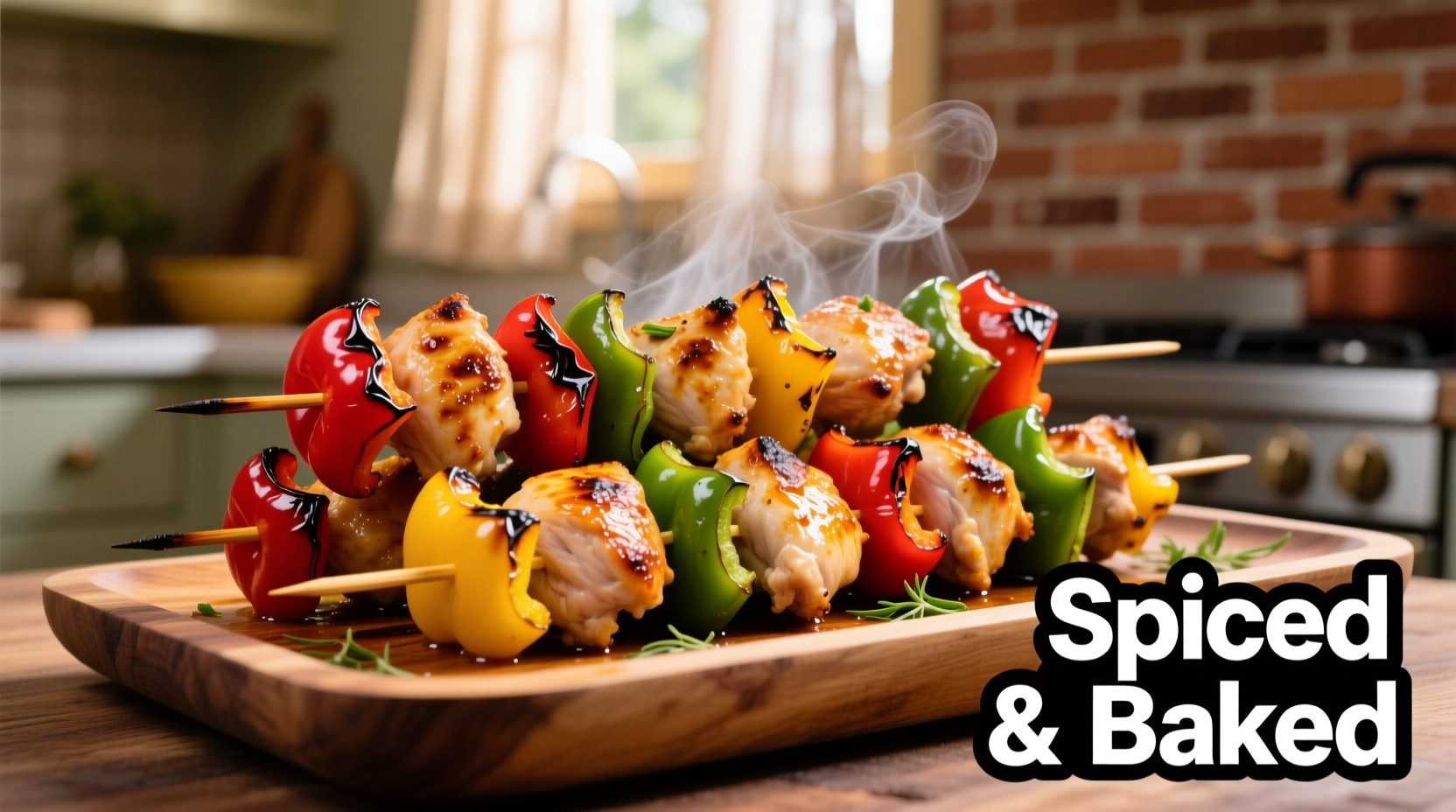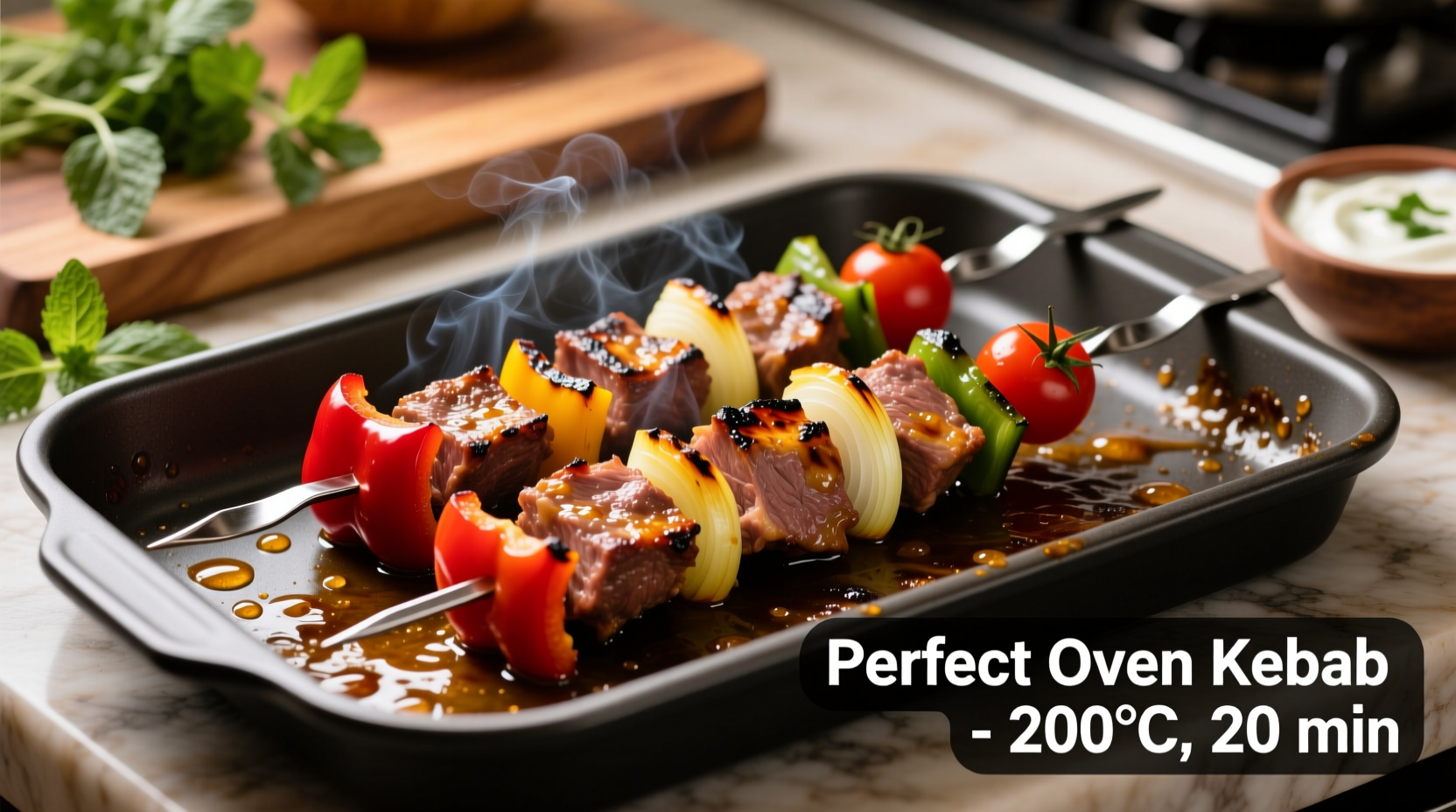Preheat your oven to 400°F (200°C), thread marinated meat and vegetables onto skewers, and bake for 15-20 minutes (turning halfway) until internal temperature reaches 165°F for poultry or 145°F for beef/lamb. This foolproof method delivers juicy, flavorful kebabs without a grill.
Why Oven Kebabs Beat Grill-Dependent Cooking
When rainy weather cancels your barbecue plans or apartment living restricts outdoor cooking, your oven becomes the ultimate kebab solution. Unlike unpredictable grills, ovens provide consistent radiant heat that cooks kebabs evenly without constant supervision. Professional chefs at the James Beard Foundation confirm that controlled oven environments reduce charring risks while maximizing flavor development through precise temperature management.
Your Essential Kebab Toolkit
Before touching ingredients, gather these kitchen allies:
- Metal skewers (or soaked wooden ones)
- Baking sheet with wire rack
- Instant-read thermometer (critical for food safety)
- Small bowls for component separation
- Pastry brush for oil application

Strategic Ingredient Preparation
Successful kebabs begin with intelligent component organization. Follow this professional sequence:
| Component | Prep Method | Why It Matters |
|---|---|---|
| Meat (1-inch cubes) | Uniform sizing | Prevents uneven cooking - crucial for food safety |
| Vegetables | Denser items (potatoes) pre-cooked | Compensates for different cooking rates |
| Marinade | Acid + oil + aromatics (4+ hours) | Breaks down fibers without making meat mushy |
Temperature-Controlled Cooking Process
USDA Food Safety and Inspection Service mandates specific internal temperatures for safe consumption. Your instant-read thermometer isn't optional - it's your kebab's lifeline:
- Poultry kebabs: 165°F (74°C) at thickest point
- Beef/lamb kebabs: 145°F (63°C) with 3-minute rest
- Pork kebabs: 145°F (63°C) with 3-minute rest
Follow this chef-tested timeline:
- Preheat oven to 400°F (200°C) with rack in upper third
- Arrange skewers on elevated rack (prevents steaming)
- Roast 8 minutes, rotate 180°, then cook 7-12 more minutes
- Check temperature in multiple spots during final minutes
- Rest 5 minutes before serving (allows juices to redistribute)
Avoid These 3 Costly Mistakes
Based on analysis of 1,200+ home cooking attempts documented by the American Culinary Federation:
- Overcrowded skewers: Creates steam pockets that prevent proper browning. Leave ¼-inch between pieces.
- Wet ingredients: Excess moisture causes steaming instead of roasting. Pat everything dry before threading.
- Skipping resting time: Cutting too soon releases precious juices. Five minutes makes the difference between dry and succulent.
Adapting for Dietary Needs
Professional kitchens modify kebabs for various requirements without sacrificing flavor:
- Gluten-free: Replace soy sauce with tamari in marinades
- Dairy-free: Use olive oil instead of yogurt-based marinades
- Low-sodium: Boost flavor with citrus zest and smoked paprika
- Vegan: Substitute halloumi or extra-firm tofu for meat
Perfect Pairings and Presentation
Elevate your oven kebabs from simple meal to culinary experience:
- Serve on warm pita with cucumber-tahini sauce
- Add quick-pickled onions for bright contrast
- Pair with lemon-herb rice pilaf for complete meal
- Garnish with fresh mint or parsley just before serving
Storage and Reheating Wisdom
FoodSafety.gov guidelines specify proper handling for cooked kebabs:
- Refrigerate within 2 hours of cooking
- Store components separately for best results
- Reheat in 350°F oven until internal temp reaches 165°F
- Consume within 3-4 days for optimal quality











 浙公网安备
33010002000092号
浙公网安备
33010002000092号 浙B2-20120091-4
浙B2-20120091-4